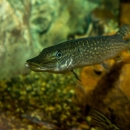Bull trout were last documented in the Clackamas River in 1963. A 2007 feasibility study indicated the Clackamas River could biologically support bull trout and would be a good candidate for a reintroduction effort. Implementation of the bull trout reintroduction program began in 2011, with the goal of establishing a naturally reproducing population of between 300 – 500 spawning adults by the year 2030. In 2015, we continued efforts to reintroduce bull trout into the Clackamas basin by collecting and transferring 300 juveniles, 74 subadults, and 7 adults from the Metolius Basin. Monitoring and evaluation were conducted to 1) ensure that the proposed action does not threaten the donor stock population, 2) assess the effectiveness of the reintroduction strategy for re-establishing a self-sustaining bull trout population, and 3) evaluate the effects of the reintroduction on Endangered Species Act-listed salmonids that currently occupy the Upper Clackamas River Basin. To meet these objectives, we obtained redd count data for the donor population and monitored the behavior of tagged fish in the Clackamas using fixed passive integrated transponder tag interrogation. Through the first five years of the project, 1) the donor population has remained healthy (>800 spawning adults); 2) transferred bull trout have dispersed throughout the upper Clackamas; and 3) some bull trout have exhibited spawning behavior. Implementation and monitoring of the reintroduction project will continue to be evaluated on an annual basis and the reintroduction strategy will be adaptively managed.
Elizabeth Bailey
Marci Koski
Publication date
Type of document
Report
Facility
Program
Species
FWS Focus
Ecosystem
FWS and DOI Region(s)




